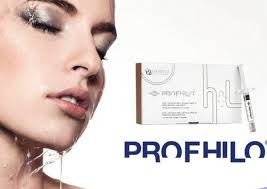Does Profhilo Hurt?
Are you curious about the pain level associated with getting Profhilo treatments? Well, you're in luck! In this article, we will address the burning question on everyone's mind - does Profhilo hurt? Whether you're considering this innovative skincare procedure or just wanting to satisfy your curiosity, we'll take a friendly and informative approach to shed light on what you can expect during your Profhilo experience. So, brace yourself as we explore the realm of aesthetic injections and discover if this popular treatment lives up to its name in terms of discomfort.
What is Profhilo?
Profhilo is a revolutionary anti-aging treatment that has gained popularity in recent years. It is a unique injectable treatment that contains high concentrations of hyaluronic acid. Hyaluronic acid is a natural substance found in the skin that helps keep it hydrated and maintains its elasticity. Profhilo is different from traditional dermal fillers as it does not add volume or shape to the face. Instead, it focuses on boosting the overall quality of the skin, making it firmer, more hydrated, and more radiant.
Composition of Profhilo
Profhilo is composed of pure hyaluronic acid, but interestingly, it is not cross-linked. Cross-linking is a process commonly used in dermal fillers to increase their longevity. However, in Profhilo, the lack of cross-linking allows the hyaluronic acid to be readily absorbed by the skin, creating a more natural and subtle result. This unique composition ensures that the skin receives the maximum benefits of hyaluronic acid without any artificial enhancements.
Benefits of Profhilo
Profhilo offers a range of benefits for those seeking to improve their skin's quality and reduce signs of aging. Firstly, it provides deep hydration to the skin, promoting a plump and youthful appearance. The hyaluronic acid present in Profhilo helps attract and retain moisture, improving the skin's texture and reducing the appearance of fine lines and wrinkles.
Secondly, Profhilo stimulates the natural production of collagen and elastin in the skin. Collagen and elastin are essential proteins responsible for maintaining skin elasticity and firmness. As we age, the production of these proteins decreases, leading to sagging skin and loss of volume. Profhilo stimulates the production of collagen and elastin, resulting in a more lifted and rejuvenated appearance.
Lastly, Profhilo can improve the overall texture and tone of the skin. It helps to reduce skin laxity and improve skin firmness, making it an effective treatment for those concerned about loose or crepey skin.
How Profhilo Works
Profhilo works by being injected into specific points on the face or body. The high concentration of hyaluronic acid stimulates the skin's natural healing response, triggering the production of collagen and elastin. The treatment is typically done in two sessions, spaced about a month apart. This allows the skin to gradually absorb the hyaluronic acid and experience the full benefits.
The hyaluronic acid in Profhilo acts as a bio-remodeling agent, effectively remodeling the skin from within. It spreads and integrates with the existing tissue, improving hydration and elasticity uniformly. This targeted approach to skin improvement sets Profhilo apart from other treatments and provides natural-looking results.

Profhilo Application Process
Preparation
Before receiving a Profhilo treatment, it is essential to have a consultation with a qualified and experienced practitioner. During this consultation, the practitioner will assess your skin's condition, discuss your expectations, and determine if you are a suitable candidate for the treatment. If deemed appropriate, the practitioner will develop a personalized treatment plan tailored to your specific needs.
Injection Technique
Profhilo is injected using a specific technique known as the BAP (Bio Aesthetic Points) technique. This technique involves injecting small amounts of Profhilo into five specific points on each side of the face. The injections are generally well-tolerated and cause minimal discomfort.
Duration of Treatment
The entire Profhilo treatment usually takes about 30 minutes. Most patients can return to their normal activities immediately after the procedure. However, it is essential to follow the aftercare advice provided by the practitioner to ensure optimal results.
Sensitivity and Pain
Potential Sensitivity
When considering any aesthetic treatment, it is natural to have concerns about potential pain or discomfort. The sensitivity experienced during a Profhilo treatment can vary from person to person. Some individuals may be more sensitive to injections, while others may have a higher pain threshold and hardly feel any discomfort.
Pain During and After Treatment
During the Profhilo treatment, you may experience a slight pricking sensation as the injections are administered. However, the discomfort is usually mild and well-tolerated by most individuals. After the treatment, some people may feel a brief stinging sensation or notice mild redness at the injection sites. These effects typically subside within a few hours to a day.
Anesthetic Options
To ensure patient comfort, various anesthetic options can be considered. While Profhilo does not typically require numbing cream or local anesthesia, some individuals may prefer to have a topical anesthetic applied before the treatment. This can help minimize any potential discomfort associated with the injections. It is important to discuss your comfort levels and preferences with your practitioner before the treatment to ensure a positive experience.

Factors Affecting Pain Perception
Individual Pain Threshold
Pain perception varies from person to person. Some individuals may have a high pain threshold and hardly feel any discomfort during the Profhilo treatment. Others may be more sensitive and may experience mild discomfort during the injections. It is important to remember that pain is subjective, and what may be uncomfortable for one person may not be bothersome to another.
Injection Technique
The skill and expertise of the practitioner performing the Profhilo treatment can greatly influence the level of pain experienced. Experienced practitioners are trained to use precise injection techniques that minimize discomfort for the patient. They have a deep understanding of facial anatomy and know how to administer the injections with precision, ensuring minimal pain and optimal results.
Treatment Area
The area being treated can also affect the level of discomfort experienced during the Profhilo treatment. Some areas of the face may be more sensitive than others, such as the lips or the under-eye area. However, due to the unique composition of Profhilo and its ability to spread and integrate naturally, any discomfort in these areas is usually minimal.
Skill of the Practitioner
The skill and expertise of the practitioner play a crucial role in minimizing discomfort during the Profhilo treatment. A skilled practitioner will take the time to understand your pain tolerance, use appropriate injection techniques, and strive to provide a comfortable experience. It is important to choose a reputable practitioner with a proven track record to ensure your safety and satisfaction.
Patient Experiences
Varied Sensations
Patient experiences with Profhilo can vary, as individual pain tolerance and sensitivity levels differ. Some individuals may report feeling nothing more than slight pressure during the injections, while others may describe a mild pricking sensation. It is important to remember that these sensations are temporary and most patients find them tolerable.
Common Discomfort Levels
Discomfort during a Profhilo treatment is typically minimal and well-tolerated. Patients often describe the injections as feeling like tiny pinpricks or like a slight stinging sensation. These sensations are short-lived and subside quickly after the treatment is complete.
Overall Tolerance
Despite the potential for mild discomfort, most patients report that the overall tolerance of the Profhilo treatment is high. The results achieved from the treatment, such as improved skin quality and rejuvenation, often outweigh any temporary discomfort experienced during the procedure. Many individuals find that the minimal discomfort is well worth the long-lasting benefits of the treatment.
Managing Discomfort
Topical Anesthetics
For individuals who are concerned about discomfort during the Profhilo treatment, topical anesthetics can be applied to numb the skin. These anesthetics are usually in the form of numbing creams or gels and need to be applied about 30 minutes before the treatment. They help to desensitize the skin and reduce any potential discomfort associated with the injections.
Cooling Techniques
Another method to manage discomfort during the Profhilo treatment is the use of cooling techniques. The practitioner may use a cold compress or ice pack to numb the skin before each injection. Cold temperatures help to constrict blood vessels, reducing the sensation of pain. Cooling techniques can be particularly effective in areas where the skin is more sensitive or prone to discomfort.
Distraction Methods
Distraction techniques can be employed during the Profhilo treatment to help divert your attention away from any potential discomfort. Some practitioners may engage in conversation or play calming music to create a relaxed atmosphere. Distracting your focus can help minimize any perceived pain or discomfort during the procedure.
Expert Opinions
Views on Pain Perception
Leading experts in the field of aesthetic medicine often emphasize that pain perception is subjective and can vary greatly between individuals. Most agree that the discomfort associated with Profhilo injections is minimal and well-tolerated by the majority of patients. Many patients report feeling only slight pressure or mild pricking sensations during the treatment.
Safety and Efficacy of Profhilo
Profhilo has been extensively studied and has been found to be a safe and effective treatment for improving skin quality. Clinical trials and real-world experiences have shown that the treatment produces excellent results with minimal risk of complications. The unique composition of Profhilo allows for natural integration into the skin and reduces the risk of adverse reactions.
The safety and efficacy of Profhilo are further reinforced by the fact that it is administered by trained medical professionals who have a comprehensive understanding of facial anatomy and injection techniques. Choosing a reputable and experienced practitioner is essential to ensure optimal results and minimize any potential discomfort.
Conclusion
Profhilo is a game-changer in the field of anti-aging treatments, offering superb rejuvenation and skin quality improvements. While the sensitivity and pain experienced during the treatment can vary from person to person, it is generally well-tolerated and considered to be a low discomfort procedure. The unique composition, application process, and the availability of various anesthetic options make Profhilo an excellent choice for those looking to enhance their skin's overall quality and combat signs of aging. By choosing a skilled and experienced practitioner, managing discomfort, and considering individual pain tolerance, you can undergo a Profhilo treatment with confidence and enjoy the long-lasting benefits it offers.







